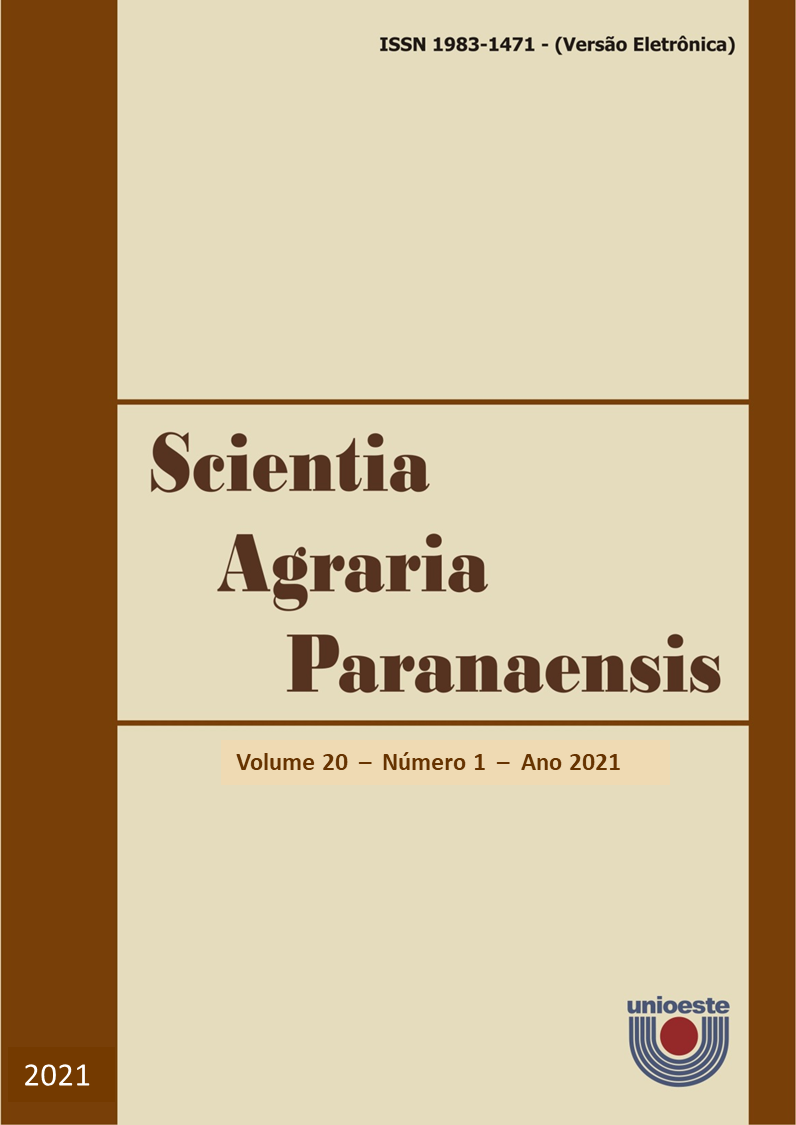Quantification of metals in macrophytes in an aquaculture area of the itaipu binational reservoir
DOI:
https://doi.org/10.18188/sap.v20i1.15403
Agencias de apoyo
Fundação Araucária, Unioeste
Palabras clave:
tilápiaResumen
The macrophytes in natural conditions perform an important role in the maintenance and balance of aquatic environments with a capacity of absorbing the excess of nutrients and pollutants serving as bioindicators of water quality in aquatic ecosystems. The objective was to evaluate the levels of trace metals in three species of macrophytes (Egeria densa - submerged and Eichhornia crassipes and Salvinia auriculata - floating) collected around an aquaculture area of cages in the Itaipu Binational reservoir, during the four seasons of the year. The macrophyte samples were submitted of nitroperchloric digestion. Subsequently, the quantification of metals (Cu, Zn, Fe, Mn, Pb, Cd and Cr) was carried out by flame atomic absorption spectrometry analytical method. The concentration of Cu, Fe and Mn in E. densa and S. auriculata was higher (P<0.05) than in E. crassipes. The samples of S. auriculata and E. crassipes had the lowest concentrations (P<0.05) of Pb. The lowest metal pollution index (MPI) was determined in E. crassipes. There was greater bioaccumulation of metals in the root concerning the stem and leaves of E. crassipes (P<0.05). The results obtained in this study show the influence of seasonal variation in the levels of Fe and Zn and the species analyzed on the concentration of Fe, Zn and Mn accumulated in aquatic macrophytes. The macrophytes E. crassipes and E. densa can be considered efficient accumulators of metals, indicating the exposure of the concentration of trace metals around the aquaculture area intended for the fish production in cages.Descargas
Publicado
12-07-2021
Cómo citar
MARENGONI, N. G.; CHAMBO, A. P. S. Quantification of metals in macrophytes in an aquaculture area of the itaipu binational reservoir. Scientia Agraria Paranaensis, [S. l.], v. 20, n. 1, p. 81–88, 2021. DOI: 10.18188/sap.v20i1.15403. Disponível em: https://e-revista.unioeste.br/index.php/scientiaagraria/article/view/15403. Acesso em: 11 may. 2025.
Número
Sección
Artigos Científicos
Licencia
Aviso de Direito Autoral Creative Commons
Política para Periódicos de Acesso Livre
Autores que publicam nesta revista concordam com os seguintes termos:
1. Autores mantém os direitos autorais e concedem à revista o direito de primeira publicação, com o trabalho simultaneamente licenciado sob a Licença Creative Commons Attribution que permite o compartilhamento do trabalho com reconhecimento da autoria e publicação inicial nesta revista.2. Autores têm autorização para assumir contratos adicionais separadamente, para distribuição não-exclusiva da versão do trabalho publicada nesta revista (ex.: publicar em repositório institucional ou como capítulo de livro), com reconhecimento de autoria e publicação inicial nesta revista.
3. Autores têm permissão e são estimulados a publicar e distribuir seu trabalho online (ex.: em repositórios institucionais ou na sua página pessoal) a qualquer ponto antes ou durante o processo editorial, já que isso pode gerar alterações produtivas, bem como aumentar o impacto e a citação do trabalho publicado (Veja O Efeito do Acesso Livre).
Licença Creative Commons
Esta obra está licenciada com uma Licença Creative Commons Atribuição-NãoComercial-CompartilhaIgual 4.0 Internacional, o que permite compartilhar, copiar, distribuir, exibir, reproduzir, a totalidade ou partes desde que não tenha objetivo comercial e sejam citados os autores e a fonte.


